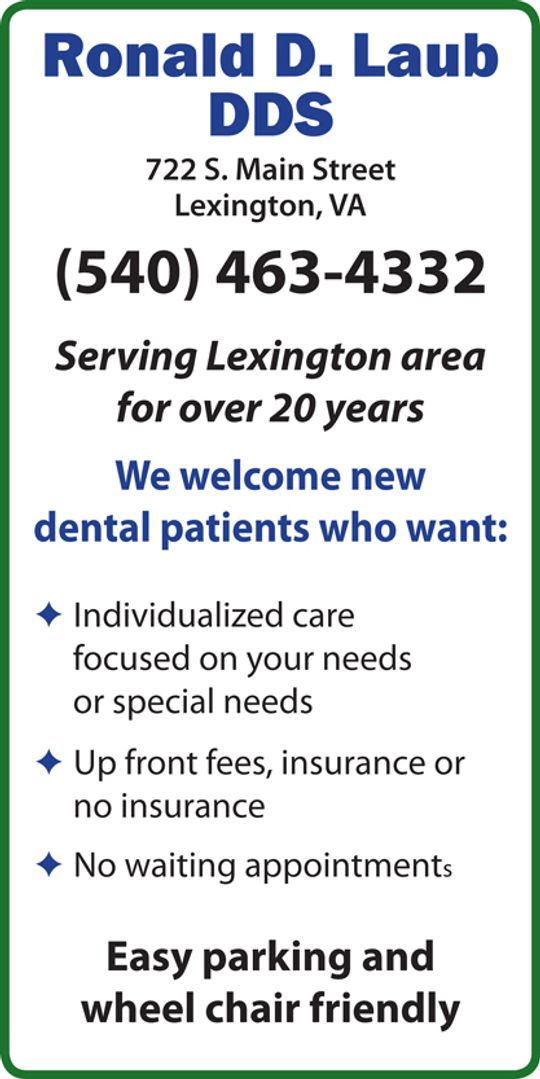BV Leaders Discuss Project At Joint Meeting
Buena Vista’s school board and city council have agreed to take the next step toward a possible new pre-kindergarten through seventh grade school construction project, voting at a joint meeting last week to pursue detailed cost estimates and financial modeling.
The move signals a shift from broad discussion to concrete planning, as city leaders aim to determine what a new school facility would actually cost — and whether a project could feasibly appear on this fall’s ballot for voter approval.
“I think we need to know what we’re telling people before we ask them to support it,” Buena Vista Mayor Tyson Cooper said during the meeting.
The joint meeting on March 12, guided by the joint school facilities committee, centered on the findings of a feasibility report prepared by Energy Systems Group.
The report, presented by the ESG engineers who have been working with the facilities committee, analyzed long-term costs and benefits for various school infrastructure options and emphasized the deteriorating condition of the city’s middle school as a pressing concern.
The most favorable scenario outlined in the report involves building a new pre-K through seventh grade facility on the high school campus — a project that, according to the financial modeling, would offer greater longterm savings and consolidation benefits than renovating the middle school or constructing a new standalone middle school.
However, officials noted that none of the scenarios can be fully weighed until real estimates are in hand.
“I don’t think it makes sense to go out and try to sell anything to the public yet,” Cooper said. “We don’t have a plan. We don’t have a price tag. We need to get that first.”
As part of the vote, the two governing bodies agreed to revisit previous architectural plans, consult with professionals for updated estimates, and work toward presenting a fully scoped project for consideration in the months ahead.
--- Much of the broader context for the school facilities conversation was laid out weeks earlier at a Buena Vista City Council retreat, where a pair of economists delivered a comprehensive analysis of the city’s economic and community development outlook.
The message, delivered in both data and plain language, was strikingly consistent: school quality is the single most important factor in building a thriving community.
Michael Hicks, a Ball State University economist, and David Terrell, longtime regional planning expert, presented findings from both quantitative data and qualitative focus groups. The retreat report covered population trends, employment, housing markets, quality of life indicators, and community visioning. But time and again, the presenters returned to the same point: investment in public education — particularly the perception and performance of schools — is the strongest predictor of future growth.
“Economic development today is really about making a place where people want to live,” Hicks told Council. “And that starts with the schools.”
That message was supported by state performance data showing Buena Vista schools now outranking Rockbridge County schools, a fact Hicks called a “massively untold story.” He emphasized that most residents and even some local leaders may not fully realize just how much the city’s school performance has improved — and warned that facilities matter in shaping how schools are perceived by families and employers alike.
The retreat presentation also included a breakdown of Buena Vista’s economic position relative to surrounding localities. Housing costs remain lower than regional averages, and the city’s overall tax burden — despite relatively high property tax rates — is still modest when measured as a share of income. The analysts noted this as a sign that the city has fiscal capacity to make needed investments, if the community chooses to.
The qualitative portion of the retreat also revealed clear alignment between residents and elected officials on many longterm goals. In visioning exercises and focus group sessions, participants consistently named education, housing, infrastructure, and economic planning as key priorities. “Educational investments” were highlighted as a core part of the city’s longstanding vision, alongside downtown revitalization and recreational development. --- Taken together, the retreat’s findings offer a broader framework for understanding the decisions now facing Buena Vista. The question of whether — and how — to invest in new school facilities is not just a local education issue. It’s part of a larger conversation about what kind of community the city wants to be in the decades ahead.
At the joint meeting, that conversation came into sharper focus as City Council members and School Board representatives reacted to the feasibility report and began weighing the implications of a new school project.
The discussion revealed clear lines of tension between caution and conviction. Several City Council members voiced concern about public support, especially in the face of potentially significant tax increases. Council member Stanley Coffey warned bluntly, “When we tell people we’re going to double their taxes, we’re not going to be successful. And that’s what scares me.”
That notion – of doubling taxes – was brought up numerous times in the meeting, and comes from the ESG report’s most conservative estimates, in which scenario the city pays the most for the project. Mayor Cooper clarified at these times that the figures being cited were based on “wild estimates,” which is why he pushed a vote to get accurate figures at the end of the meeting.
City Council member Steve Webb questioned whether voters would be willing to approve a new facility at all, even if longterm financial modeling shows it could save money over time.
Council member Michelle Poluikis reluctantly agreed. “Right now, people are struggling,” she said. “They’re paying hundreds of dollars a week at the grocery store. They’re not going to go for this unless we can show them exactly why it’s worth it.”
But City Council member Ronald Cash emphasized how clear it is that action is severely needed. Cash, who has a background in civil engineering, offered a direct warning about the condition of the middle school building. “All I have to do is drive around the middle school slowly,” he said. “I can see there are problems with the building. You’ll see cracks in the brick and the mortar. That’s not because the brick mason did a bad job. That’s because of subsidence in the foundation system.”
He added that if he had children or grandchildren in the school system, “I wouldn’t want them going to school there. I would find somewhere else.”
In contrast, School Board members struck a more hopeful tone, emphasizing the quality of Buena Vista’s school system and the need to ensure its future. “I believe in the people of this city,” said Board member Paula Charlton. “I believe they love their children more than anything else.”
Charlton and chair Teresa Ellison each spoke to the strength of the schools and the commitment of their staff. “I’ve worked in that middle school,” Ellison said. “I know what that staff deals with. I know what maintenance deals with. And I’m here to stand with you if it comes to raising taxes.”
Charlton added a personal note. “Growing up, this community gave me something. I wanted to give it back,” she said. “I still believe this community will support our schools if we explain it right.”
Superintendent Tony Francis also pointed out that the city already has a head start. Two sets of previous building plans —developed through public-private partnership studies —could be revisited and adapted, potentially saving time and money. “We have two designs already from when we got the PPAs,” Francis said. “We can dust those off and see what the estimate would be to follow that and do it as conservatively as possible.”
The meeting ended with a vote to pursue updated cost estimates and formal financial modeling based on the pre-K through seventh grade scenario. The motion passed easily, with only one dissenting vote — City Council member Steve Webb. Both boards agreed to reconvene after new figures are developed, with the goal of bringing a potential school project before voters in the fall.
“This is just taking the next step of exploring,” Cooper said. “We need to know what we’re telling people before we ask them to support it.”
Cooper emphasized his own commitment to the process and framed the vote as part of the city’s broader responsibility to its future. “We’ve got to be willing to stand up for our schoolchildren and our citizens,” he said. “And we’ve got to make a commitment to do what’s right for Buena Vista.”




